Don't wanna be here? Send us removal request.
Text
How to Choose the Right iOS App Development Company
In today's digital landscape, mobile apps have become a cornerstone of business success. Among the various platforms, iOS has a unique position with its loyal user base, high engagement, and lucrative market. As a result, choosing the right iOS app development company is critical for turning your ideas into successful applications. Whether you are an entrepreneur, a startup, or an established business, selecting the right partner can make or break your app’s success. Here’s a guide on how to choose the right iOS app development company.

1. Assess Their Experience and Expertise
The first factor you need to consider when choosing an iOS app development company is their experience. The more experience a company has, the better equipped they will be to handle the complexities of building a high-quality iOS app.
Look for companies with a proven track record of creating successful iOS apps. They should be familiar with all stages of the app development lifecycle—from concept and design to development, testing, and launch. Also, check if they have expertise in developing apps for various industries. An experienced company will understand the nuances of different sectors, allowing them to tailor solutions specific to your needs.
Check their portfolio to see the kind of apps they’ve worked on. A diverse range of apps across different niches (e-commerce, finance, healthcare, entertainment, etc.) will indicate that they are adaptable and capable of building custom solutions.
2. Evaluate Their Technical Skills
Building a top-tier iOS app requires more than just creativity. It demands a deep understanding of the iOS platform and the programming languages involved. An iOS app development company should be proficient in languages such as Swift and Objective-C, which are essential for building modern, robust apps. Additionally, they should have experience with Xcode, Apple’s integrated development environment (IDE), as well as an understanding of Apple’s guidelines and requirements.
Moreover, they should have a solid grasp of various iOS frameworks like UIKit, CoreData, CoreAnimation, and others that are necessary to build a functional and visually appealing app. The company should also be well-versed in app optimization and performance enhancement techniques to ensure smooth and responsive applications.
3. Check Client Reviews and Testimonials
One of the best ways to gauge the reliability and performance of an iOS app development company is by checking client reviews and testimonials. Past clients can provide valuable insights into the company's work ethic, communication, and the quality of the final product.
Visit trusted review platforms such as Clutch, GoodFirms, or Glassdoor to read honest reviews about the company’s services. Additionally, ask the company for case studies or references that you can contact directly. Getting feedback from companies that have already worked with the app development team will give you a clear understanding of their strengths and weaknesses.
4. Understand Their Development Process
A successful iOS app development company will have a streamlined and transparent development process. It’s important to ensure that the development process aligns with your goals and expectations.
The company should follow a structured approach, including the following stages:
Discovery and planning: Understanding your goals, target audience, and the problem your app will solve.
Design: Creating wireframes, UI/UX design, and prototyping.
Development: Writing code, integrating APIs, and building core features.
Testing and QA: Rigorous testing to identify and fix bugs and ensure the app performs seamlessly.
Launch: Deploying the app to the App Store and optimizing the launch.
Post-launch Android App Development Company support and maintenance: Offering support for any future updates or issues.
Ensure that they maintain clear communication during every stage and that you are regularly updated on progress. This not only helps keep the project on track but also allows for a more collaborative working environment.
5. Evaluate Communication and Collaboration
Effective communication is one of the most important factors when selecting an iOS app development company. You want to work with a team that listens to your ideas, understands your requirements, and keeps you informed throughout the development process.
A company that offers excellent communication will keep you in the loop during every stage of development, provide regular progress reports, and offer suggestions or improvements when necessary. Also, ensure they are comfortable using collaboration tools like Slack, Jira, or Trello to track the progress and ensure transparency.
It’s also important to find a company that is responsive and timely in their communication. If a company takes a long time to respond to your inquiries before signing a contract, this could be a red flag for future delays in the project.
6. Consider Their Design Capabilities
The design of your app plays a huge role in its success. A beautiful, intuitive, and user-friendly design can significantly enhance user experience and increase the app’s chances of success. Ensure the iOS app development company you choose has a talented design team that specializes in UI/UX design for iOS apps.
Look for companies that understand the iOS Human Interface Guidelines, which are key to creating an app that fits seamlessly within the iOS ecosystem. A well-designed app should not only look good but also be functional, intuitive, and easy to navigate. They should also be able to deliver consistent design across multiple screen sizes, ensuring a responsive experience for users.
7. Assess Post-Launch Support and Maintenance
The app development process doesn’t end with the launch. Post-launch support and maintenance are critical to ensuring that your app remains functional, up-to-date, and free from bugs.
Ask the company about their post-launch services. Do they offer ongoing maintenance? Will they be able to implement future updates and enhancements? Given that iOS apps often need regular updates due to new iOS releases, bug fixes, or new features, this is an important factor to consider.
8. Pricing Structure and Budget
Last but not least, consider the pricing and your budget. While you don’t necessarily want to go for the cheapest option, it’s important to find a company whose pricing aligns with your budget. Avoid companies that offer unusually low prices, as they may compromise on quality.
Request a detailed proposal that outlines the cost for each stage of the development process, and ask if there are any additional costs. Clear communication regarding pricing helps avoid unexpected expenses and ensures that both parties are on the same page throughout the project.
Final Thoughts
Choosing the right iOS app development company requires thorough research, careful consideration, and clear communication. Focus on their experience, technical expertise, design skills, communication practices, and post-launch support. By considering these factors, you’ll be well on your way to partnering with a company that can help bring your iOS app vision to life.
0 notes
Text
What Makes a Great iOS App Development Service Stand Out?
In today’s digital-first world, iOS apps are central to how people interact, shop, work, and entertain themselves. The App Store is flooded with millions of applications, but only a few manage to stand out in terms of design, usability, and functionality. Behind every successful iOS app is a skilled development team that understands not only the technical aspects of building an app but also the nuances of the Apple ecosystem.

So, what separates a great iOS app development service from the rest? Let’s explore the key attributes that make a service truly exceptional.
1. Deep Understanding of the Apple Ecosystem
A great iOS development service goes far beyond writing code—it immerses itself in the Apple ecosystem. This means understanding iOS design principles, Apple’s Human Interface Guidelines (HIG), App Store policies, and how to optimize for various devices including iPhones, iPads, Apple Watches, and even Apple TVs.
iOS users have come to expect a polished, intuitive experience. Developers who fail to adhere to Apple’s strict guidelines often end up with apps that are clunky or get rejected during the App Store approval process. Services that excel know how to build seamlessly integrated, native experiences that feel like a natural extension of iOS.
2. Strong UI/UX Design Expertise
User experience can make or break an app. Even the most technically sound applications won’t retain users if they’re difficult to navigate or visually unappealing. Great iOS app development services prioritize UI/UX design from the outset. They take the time to understand user personas, pain points, and behavior patterns to create intuitive interfaces that enhance usability.
They also understand how design elements like animations, gesture controls, and accessibility features impact the overall experience. An eye for detail—such as responsive layouts, aesthetic iconography, and smooth transitions—can be the difference between an app that gets deleted and one that earns a permanent place on a user’s home screen.
3. Technical Mastery of Swift and Objective-C
Technical skill is a foundational requirement. While many modern apps are built using Swift, Objective-C remains relevant for maintaining legacy codebases. A top-tier iOS development service is proficient in both languages and understands when to use each one strategically.
Beyond the basics, a great service is also skilled in working with Apple’s frameworks like Core Data, Core Animation, ARKit, HealthKit, and CloudKit. It can navigate complex backend integrations, work with third-party APIs, and ensure the app is optimized for performance, battery usage, and network efficiency.
4. End-to-End Development Capabilities
A standout iOS app development company offers end-to-end services. This includes everything from initial ideation and wireframing to development, testing, deployment, and post-launch support. Having a full-stack approach ensures consistency across the app lifecycle and simplifies project management for the client.
The best teams also provide strategy consultation, helping clients validate ideas, define goals, and develop product roadmaps. They work in close collaboration with clients, integrating feedback and staying aligned with the vision throughout the project.
5. Agile and Transparent Development Process
Transparency and agility in the development process are crucial for building trust and delivering quality outcomes. Great iOS development services follow agile methodologies—breaking the project into manageable sprints, regularly delivering working prototypes, and iterating based on feedback.
This iterative approach not only speeds up development but also reduces risk, improves flexibility, and enhances client involvement. Services that provide detailed timelines, regular progress updates, and clear documentation stand out by demonstrating accountability and professionalism.
6. Robust Testing and Quality Assurance
No matter how well an app is designed or coded, bugs and crashes can tarnish the user experience. Exceptional iOS development services invest heavily in testing and QA. They employ a mix of manual and automated testing to cover all aspects: unit testing, UI testing, performance testing, security audits, and usability testing.
They also test the app across various device versions and iOS releases to ensure compatibility and reliability. By delivering a polished, bug-free product, these services help businesses avoid poor user reviews and costly hotfixes post-launch.
7. Focus on Performance and Scalability
A great app doesn’t just work—it works well. The top iOS development services optimize apps for speed, responsiveness, and low memory usage. They write clean, maintainable code that ensures fast loading times and efficient performance under heavy usage.
They also think ahead, designing architectures that can scale. Whether it's onboarding more users, integrating new features, or expanding to other platforms, great development services plan for the future so the app doesn’t require complete rewrites as it grows.
8. App Store Optimization and Post-Launch Support
Launching an app is only the beginning. An elite iOS app development service helps clients navigate the App Store submission process, avoiding common pitfalls and rejections. They also provide App Store Optimization (ASO) support, helping the app gain visibility through smart use of metadata, keywords, and compelling descriptions.
After launch, the best services offer ongoing support—monitoring performance, fixing issues, collecting user feedback, and releasing updates. This long-term partnership ensures the app remains competitive and relevant in a fast-changing market.
9. Client-Centric Approach
At the heart of any great service is a commitment to client success. Standout iOS app development services prioritize clear communication, set realistic expectations, and deliver on promises. They’re flexible, responsive, and genuinely invested in helping the client succeed.
Instead of simply Website Development Company executing a brief, they act as strategic partners—offering suggestions, challenging assumptions, and sharing their insights to build a better product.
Conclusion
In a competitive landscape where millions of apps vie for user attention, quality is non-negotiable. A great iOS app development service combines technical excellence, design intuition, strategic thinking, and customer test automation service focus to deliver products that not only work, but thrive.
When choosing a development partner, businesses should look beyond price tags and timelines. The right service will offer a comprehensive approach, deep domain expertise, and a passion for crafting exceptional iOS experiences. And that’s what truly makes them stand out.
0 notes
Text
Mobile App Development Companies and the Rise of Micro Apps
In the fast-evolving world of mobile technology, user expectations are constantly shifting toward speed, simplicity, and highly tailored experiences. This has led to a major transformation in how mobile apps are conceived, built, and deployed. At the center of this shift is the rise of micro apps—lightweight, task-specific mobile applications that are gaining immense traction. For mobile app development companies, this trend represents not only a change in user behavior but also a significant opportunity to innovate and differentiate.

Understanding Micro Apps
Micro apps are minimal, focused applications that perform one or a few functions very well. Unlike traditional mobile apps that are large, multifunctional, and sometimes bloated, micro apps are designed for efficiency. Think of them as the mobile equivalent of a single-purpose tool—designed to complete a specific task quickly and effectively.
Popular examples include apps for checking your calendar, scanning a document, approving an invoice, or even tracking a package. These apps strip away the unnecessary layers and focus on delivering value with minimal friction. They are often embedded within larger platforms (like Slack, Microsoft Teams, or Salesforce) or delivered through lightweight frameworks like progressive web apps (PWAs).
Why Micro Apps Are Gaining Popularity
Faster Development and Deployment Micro apps require less time and fewer resources to build. This allows development Flutter App Development Company teams to respond quickly to business needs or user feedback. Companies can roll out updates or new features with minimal risk and effort, enabling continuous delivery and rapid iteration.
Improved User Experience Users don’t always want to download a heavy app with dozens of features they’ll never use. Micro apps reduce cognitive load and deliver immediate value, which makes them appealing to mobile users who demand speed and simplicity.
Better Performance and Lower Data Usage Because they are android app development companies in us lightweight, micro apps consume fewer system resources and less data. This is particularly important in emerging markets where bandwidth and storage can be limited.
Enterprise Integration In large organizations, micro apps are becoming the backbone of internal digital workflows. They are used for specific tasks like submitting timesheets, accessing HR services, or approving expense reports, and are often integrated into larger enterprise systems.
The Role of Mobile App Development Companies
Mobile app development companies are at the forefront of this movement. As businesses shift toward microservice architecture and modular design, these companies are rethinking their strategies. Here’s how they’re adapting:
Agile and Modular Development Many development firms are embracing agile methodologies to deliver micro apps incrementally. With a modular approach, developers can build reusable components, speeding up the development cycle and ensuring consistency across apps.
Cross-Platform and PWA Expertise Micro apps are often built using cross-platform technologies or as PWAs to maximize reach and minimize cost. Mobile development firms are investing in tools like Flutter, React Native, and Angular to deliver responsive, app-like experiences across devices.
API-Centric Architecture APIs are central to micro apps, as they often rely on external services and databases. App development companies are becoming adept at API design and integration, ensuring micro apps function seamlessly within a larger digital ecosystem.
Security and Compliance With more apps floating around—even if they are small—security becomes a concern. Development companies are stepping up to implement secure coding practices, data encryption, and compliance with data protection regulations like GDPR and HIPAA.
UX/UI Innovation Since micro apps are heavily focused on simplicity, the user interface becomes even more critical. Development firms are pushing the boundaries of UX/UI design to ensure these small apps are intuitive, attractive, and instantly useful.
Micro Apps in Action: Real-World Use Cases
The growing use of micro apps spans multiple industries:
Healthcare: Apps for scheduling appointments, refilling prescriptions, or accessing lab results.
Finance: Simple apps for checking balances, approving transactions, or viewing recent activity.
Retail: Micro apps for inventory tracking, order status updates, and loyalty programs.
Education: Tools for assignment submissions, attendance tracking, and accessing course materials.
Even government and public sector agencies are turning to micro apps to streamline services and improve citizen engagement.
Challenges in Micro App Development
Despite the many benefits, micro apps also come with their own set of challenges:
Fragmentation: Having many small apps can create a fragmented user experience if not managed properly.
Discoverability: Users may struggle to find the right app for the task if there are too many.
Maintenance: Managing updates, bugs, and compatibility across numerous micro apps can be labor-intensive.
Data Integration: Ensuring all micro apps sync correctly with central databases and systems can be technically complex.
To address these, companies are investing in centralized app hubs, strong governance models, and advanced analytics to track usage and performance.
The Future of Mobile Apps Is Micro
As digital ecosystems grow more complex and users demand faster, more personalized services, micro apps are poised to dominate. Mobile app development companies that adapt to this model stand to benefit immensely. By focusing on speed, specificity, and seamless integration, they can help businesses stay ahead of the curve.
0 notes
Text
Why Transparency Is Key in Mobile App Development Companies
In today’s digital age, mobile applications have become an essential part of how businesses operate and connect with their customers. From startups to multinational corporations, the demand for high-quality mobile apps is at an all-time high. As a result, mobile app development companies are in a competitive and fast-evolving industry. But beyond technical expertise and creative design, one element often determines the success or failure of a project: transparency.
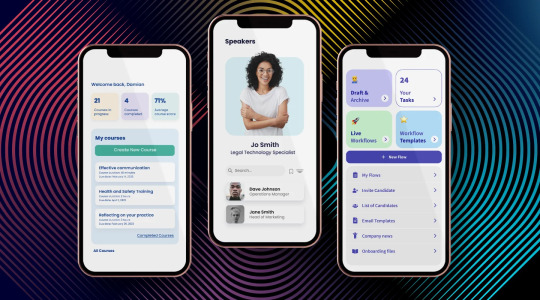
Transparency in mobile app development refers to the open and honest communication between the development company and the client. It encompasses every phase of the process—from initial consultations and contracts to development milestones and post-launch support. Here’s why transparency is not just an added value, but a critical factor in building successful mobile apps and lasting client relationships.
1. Builds Trust from the Start
The foundation of any strong partnership is trust. Clients often invest significant resources—time, money, and intellectual property—into their app projects. When a development company is transparent about their processes, timelines, and costs, it sets a precedent for trust. Clients are more likely to feel secure in their investment when they understand what they’re paying for and what they can expect in return.
Clear communication about what is and isn’t possible within a certain budget or timeframe helps manage expectations and prevents future conflicts. By being upfront, development companies show clients that their interests are being prioritized, fostering a stronger working relationship from the outset.
2. Reduces the Risk of Miscommunication
Mobile app development is a complex process involving numerous stages—research, design, development, testing, and deployment. Without clear and continuous communication, misunderstandings can easily arise. Whether it’s a feature that was misinterpreted or a timeline that was misunderstood, lack of transparency can result in delays, cost overruns, or an end product that doesn’t meet client expectations.
Transparency ensures that both parties are on the same page at every step. Regular updates, shared documentation, and honest feedback loops reduce ambiguity and create a smoother workflow. This not only improves project outcomes but also minimizes the need for costly revisions later on.
3. Improves Project Efficiency
Transparency helps streamline the development process. When all stakeholders are clear on goals, responsibilities, and deadlines, projects are more likely to stay on track. Clients can make informed decisions faster, and developers can focus on execution without constant backtracking or clarification.
Tools such as project management platforms (e.g., Jira, Trello, Asana) allow clients to track progress in real-time. Access to these tools demonstrates a willingness to be held accountable and keeps everyone aligned. This level of openness encourages better planning, quicker problem-solving, and fewer surprises along the way.
4. Encourages Collaboration and Innovation
Great mobile apps are born from collaboration. When clients and developers work together transparently, it fosters a culture of mutual respect and open dialogue. Clients feel empowered to share ideas, give constructive feedback, and ask questions. Developers, in turn, can offer expert insights and innovative solutions without fear of pushback.
Transparency opens the door to creativity because it builds a safe environment where all ideas are considered and explored. It allows both parties to challenge assumptions, test new approaches, and ultimately create a product that exceeds expectations.
5. Enables Realistic Budgeting and Planning
Budget overruns are a common issue in mobile app development. Often, these stem from unclear scopes, hidden costs, or shifting priorities. A transparent company will provide a detailed breakdown of costs upfront, explain where the budget is going, and update clients on any changes as the project progresses.
By being honest about the financial aspects—including potential risks and optional add-ons—development companies help clients make smarter, more sustainable decisions. Clients can prioritize features, allocate resources appropriately, and avoid unpleasant financial surprises.
6. Provides Accountability and Continuous Improvement
Transparency holds both the client and the development team accountable. It ensures that commitments made during the planning phase are honored throughout the project. If mistakes happen, a transparent company will acknowledge them, communicate openly about the impact, and propose solutions to address the issue.
This level of honesty not only builds credibility but also promotes a culture of continuous improvement. Clients are more likely to return for future projects or refer the company to others when they feel that their partners take responsibility and strive for excellence.
7. Enhances Post-Launch Support and Maintenance
The work doesn’t stop when an app goes live. Post-launch support, including bug fixes, updates, and feature enhancements, is a critical part of the mobile app lifecycle. A transparent development company will outline support policies, response times, and update schedules clearly before launch.
Clients need to know what kind of help they can expect after deployment. Will there be regular maintenance? How quickly will issues be resolved? A company that is transparent in this area ensures a longer and more productive partnership, and gives the client confidence in the app’s ongoing performance.
8. Boosts Reputation and Client Retention
In a competitive market, reputation is everything. Mobile app development companies that operate with transparency earn a reputation for reliability, honesty, and professionalism. This not only attracts new clients but also ensures that existing clients come back for future projects.
Word-of-mouth referrals and positive reviews are powerful marketing tools—and they’re more likely to come from clients who felt informed, respected, and involved throughout the development journey.
Website Development Company Website Development Company IN US best website development company
Conclusion
Transparency is no longer optional in the world of mobile app development. It is a fundamental principle that can make or break a project. By fostering trust, reducing misunderstandings, improving efficiency, and encouraging collaboration, transparency transforms a transactional relationship into a true partnership.
Clients don’t just want a development team—they want a team they can trust. And that trust begins with openness, honesty, and a shared commitment to success. Mobile test automation service app development companies that prioritize transparency will not only deliver better apps but also build stronger, longer-lasting relationships with their clients.
0 notes
Text
The Impact of Mobile App Development Companies on the Retail Industry
In today’s fast-paced digital era, the retail industry is undergoing a seismic transformation, driven in large part by mobile app development.
As smartphones become an extension of everyday life, consumers are shifting their shopping habits from brick-and-mortar stores to mobile platforms. At the heart of this shift are mobile app development companies, playing a pivotal role in reshaping how retailers connect with their customers.
This blog delves into how mobile app development companies are revolutionizing the retail industry, offering increased customer engagement, enhanced shopping experiences, and data-driven business growth.

1. Enhancing Customer Engagement
One of the most significant contributions mobile app development companies bring to the retail sector is enhanced customer engagement. Through intuitive and user-friendly mobile applications, retailers can connect with their audiences in real-time. Push notifications, personalized recommendations, and loyalty programs keep users returning, fostering brand loyalty and increasing retention.
For example, leading retailers like Amazon and Walmart leverage mobile apps to send timely alerts about discounts, restocks, and personalized offers. Smaller retailers, supported by mobile app development firms, can now do the same, leveling the playing field and reaching consumers more effectively.
2. Personalized Shopping Experience
Modern consumers expect more than just a transactional shopping experience—they crave personalization. Mobile apps equipped with AI and machine learning capabilities can analyze user behavior, preferences, and purchase history to deliver personalized product suggestions.
App developers integrate smart recommendation engines that not only boost sales but also improve customer satisfaction. From custom homepages to tailored notifications, retail apps are becoming smarter and more attuned to individual needs, thanks to the innovative solutions provided by mobile app development companies.
3. Omnichannel Integration
The best retail strategies seamlessly blend physical and digital experiences, and mobile app developers are instrumental in creating this omnichannel approach. Integrating features like click-and-collect, in-store availability checkers, and AR-based product previews bridges the gap between online and offline shopping.
Retailers can use mobile apps to allow customers to start shopping online and complete the purchase in-store, or vice versa. This cohesive experience increases convenience and builds trust. Mobile app development firms specialize in creating these integrated systems, ensuring that all touchpoints are consistent and connected.
4. Streamlining Operations and Inventory Management
Beyond customer-facing features, mobile app development also impacts backend operations. Custom apps developed for inventory tracking, sales forecasting, and supplier management can dramatically improve efficiency and reduce overhead.
Retailers can now access real-time inventory data, automate restocking, and gain insights into which products are in high demand. App developers create solutions that integrate with existing ERP and POS systems, enabling smarter inventory management and reducing the risk of stockouts or overstocking.
5. Boosting Sales Through Mobile Commerce
Mobile commerce (m-commerce) is experiencing rapid growth, and mobile apps are at the core of this trend. A well-designed mobile app simplifies the purchasing process, reducing cart abandonment rates and increasing conversions. Features like one-click checkout, multiple payment gateways, and mobile wallets make transactions quicker and more secure.
Retail app development companies optimize these apps for performance, usability, and speed—crucial factors for converting browsing into buying. Moreover, app developers constantly monitor user feedback and performance metrics to release updates that refine the shopping experience further.
6. Leveraging Data Analytics for Business Growth
Mobile apps are rich sources of data. From customer demographics and purchase history to session times and click patterns, apps collect valuable insights that can drive informed decision-making. Mobile app development companies equip retail apps with analytics dashboards and reporting tools, empowering retailers to make data-driven strategies.
Understanding what products are trending, which demographics are most engaged, and where users drop off in the sales funnel enables retailers to fine-tune their offerings and marketing campaigns.
7. Improving Customer Support and Communication
Mobile apps have also transformed customer service. With built-in chat support, FAQs, ticketing systems, and AI-powered chatbots, customers can get assistance at their convenience. Mobile app developers integrate these features to enhance user satisfaction and reduce the burden on human support teams.
By offering seamless and responsive support within the app, retailers can resolve issues faster, build customer trust, and improve their brand reputation.
Conclusion
The impact of Mobile App Development Company on the retail industry is undeniable. By crafting powerful, intuitive, and feature-rich mobile applications, these tech partners enable retailers to adapt to evolving consumer behaviors, streamline operations, and drive growth.
As the retail landscape continues to evolve, partnering with a skilled mobile app development company is no longer optional—it’s essential. Retailers who invest in mobile technology today will not only meet current customer expectations but also future-proof their businesses in an increasingly digital world.
0 notes
Text
How Mobile App Development Companies Optimize for Emerging Devices
In today’s fast-paced digital world, technology evolves at breakneck speed.
With the rise of emerging devices such as foldable smartphones, wearable tech, AR/VR headsets, and IoT-enabled gadgets, mobile app development companies are under pressure to stay ahead of the curve. To ensure seamless user experiences across all these devices, developers must adapt, innovate, and optimize. But how exactly do they do it?
In this blog, we’ll explore how leading mobile app development companies optimize apps for emerging devices and why staying current is essential for business success.
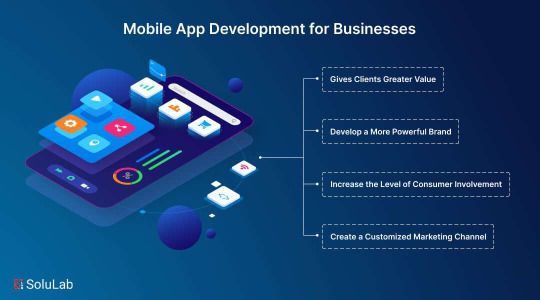
Understanding Emerging Devices
Emerging devices refer to the next-generation tech products that offer new functionalities and user experiences. These include:
Foldable smartphones (like Samsung Galaxy Z Fold)
Wearables (smartwatches, fitness trackers)
AR/VR headsets (like Meta Quest, Apple Vision Pro)
Voice-controlled assistants (like Amazon Echo, Google Nest)
IoT devices (smart home gadgets, connected appliances)
As these devices gain popularity, app developers must ensure compatibility, performance, and usability across this broadening ecosystem.
Cross-Platform Development is Key
One of the first steps mobile app development companies take to optimize for new devices is adopting cross-platform development frameworks like Flutter, React Native, and Xamarin. These tools allow developers to write a single codebase that can run on multiple platforms, including smartphones, tablets, and wearable devices.
Benefits of Cross-Platform Development:
Faster time to market
Cost-efficiency
Unified user experience
Easier maintenance and updates
By leveraging cross-platform development, companies can more easily adapt their apps to fit new screen sizes, hardware capabilities, and operating systems.
Responsive and Adaptive Design
Foldable phones and varying screen sizes bring a whole new level of complexity. Developers must implement responsive and adaptive design principles to ensure that the user interface adjusts seamlessly to different device layouts.
Optimization Techniques Include:
Flexible UI layouts that rearrange dynamically
Scalable vector graphics instead of fixed-size images
Viewport meta tags for proper scaling
Media queries to handle device-specific CSS
This ensures that whether an app is used on a compact smartwatch or a dual-screen foldable phone, it provides an intuitive and visually pleasing experience.
Leveraging Device-Specific Features
To truly optimize for emerging devices, mobile app development companies go beyond compatibility and start harnessing the unique features each device offers.
For example:
Smartwatches: Developers create lightweight apps with glanceable information and gesture controls.
AR/VR devices: They integrate spatial computing, motion tracking, and 3D rendering for immersive experiences.
Foldable phones: They use multi-window modes and app continuity features to transition seamlessly between folded and unfolded states.
Voice assistants: They build voice-enabled interfaces and natural language processing features to enhance hands-free usage.
By incorporating device-specific functionalities, apps not only run smoothly but also stand out in terms of innovation and user engagement.
Testing on Real Devices and Emulators
A key part of optimization is rigorous testing. Mobile app development companies use a combination of real device testing and emulator-based testing to ensure apps function correctly on every possible device configuration.
Testing includes:
UI/UX validation across screen sizes
Performance and memory usage analysis
Battery and network efficiency checks
Crash and error logging
By proactively testing for bugs and compatibility issues, developers can launch polished apps that provide a consistent experience across all platforms.
Keeping Up with OS and SDK Updates
Emerging devices often run on the latest versions of Android, iOS, watchOS, or proprietary operating systems. Mobile app developers must stay updated with the latest SDKs (Software Development Kits) and API changes to fully utilize the device capabilities and maintain compatibility.
Timely updates also ensure:
Security patches are applied
Deprecated features are removed
New functionalities are incorporated
This continuous learning mindset helps developers future-proof their apps and remain competitive.
Using Cloud and Edge Computing
To optimize performance and reduce latency on emerging devices, many mobile app development companies now leverage cloud computing and edge computing.
With these technologies:
Heavy computations are offloaded to the cloud
Edge devices process data closer to the source, improving real-time responsiveness
App performance becomes smoother, especially for AR/VR and IoT apps
This approach is especially crucial for devices with limited processing power like wearables and smart sensors.
Security and Privacy Considerations
Emerging devices often collect sensitive user data. As such, developers must build apps with robust security and privacy protocols. Techniques include:
End-to-end encryption
Biometric authentication
Secure APIs and data storage
GDPR and HIPAA compliance
A focus on security builds trust and ensures regulatory compliance, which is vital as data breaches and cyber threats rise.
Final Thoughts
Optimizing mobile apps for emerging devices is no longer optional—it’s a necessity. As user expectations evolve, so must the strategies of Website Development Company. By embracing cross-platform frameworks, adaptive design, device-specific features, and modern tech like edge computing, developers can create future-ready apps that delight users and drive engagement.
Whether you're a startup looking to launch a new app or a business aiming to stay relevant, partnering with a forward-thinking mobile app development company is your key to success in the age of emerging devices.
0 notes
Text
The Future of Mobile App Development in the Automotive Industry
The automotive industry is undergoing a massive transformation driven by technology, and mobile app development is playing a crucial role in shaping its future. As vehicles become smarter, more connected, and autonomous, mobile applications are evolving to enhance user experience, safety, and efficiency. The integration of mobile technology with automotive systems is not just about convenience but also about redefining mobility itself.
In this blog, we will explore the future of mobile app development in the automotive sector, the trends shaping it, and what to expect in the coming years.
1. The Rise of Connected Cars and IoT Integration
One of the most significant advancements in the automotive industry is the concept of connected cars. These vehicles use internet connectivity and sensors to communicate with other devices, infrastructure, and even other cars. Mobile apps are becoming the primary interface for managing connected car features, enabling users to control various aspects of their vehicles remotely.
Key functionalities include:
Remote start and stop
Climate control adjustments
Lock and unlock features
Vehicle health monitoring
Real-time GPS tracking
With the expansion of IoT (Internet of Things) technology, mobile apps will integrate even more deeply with vehicles, offering predictive maintenance alerts, personalized settings, and automated driving assistance.
2. Artificial Intelligence and Personalization
AI is a game-changer in mobile app development for the automotive industry. AI-driven applications can analyze user behavior, preferences, and driving patterns to offer personalized recommendations. Features like voice assistants, gesture controls, and AI-powered navigation systems are becoming more advanced.
Future AI applications in automotive mobile apps include:
Virtual assistants for hands-free operation
Predictive navigation based on driving habits
Smart recommendations for fuel-efficient routes
Personalized in-car entertainment and infotainment systems
AI-powered apps will continue to evolve, making driving more intuitive and reducing distractions for safer journeys.
3. Autonomous Vehicles and Mobile Control
Autonomous vehicles (AVs) are no longer a futuristic concept; they are actively being tested and developed by companies like Tesla, Waymo, and traditional automakers. Mobile applications will serve as the primary interface for interacting with self-driving cars.
Potential app capabilities for AVs include:
Summoning the car to a specific location
Setting destinations and travel preferences
Monitoring real-time sensor data
Over-the-air software updates
As AV technology progresses, mobile apps will play a crucial role in bridging the gap between human intervention and full autonomy.
4. Augmented Reality (AR) for Enhanced Driving Experiences
AR is revolutionizing the way drivers interact with their vehicles. Mobile apps with AR integration can enhance navigation, provide real-time hazard warnings, and improve vehicle diagnostics.
Key AR applications in mobile automotive apps include:
Heads-up displays (HUDs) projecting navigation data on windshields
AR-assisted parking and lane guidance
Interactive manuals for vehicle troubleshooting
As AR technology improves, its integration into mobile apps will make driving safer, more engaging, and more efficient.
5. Electric Vehicles (EVs) and Smart Charging Solutions
The rise of electric vehicles has led to an increasing demand for smart charging solutions. Mobile apps are central to managing EV charging, optimizing battery performance, and locating nearby charging stations.
Future trends in EV mobile apps include:
AI-driven battery health monitoring
Smart charging station recommendations based on availability
Payment integration for seamless charging transactions
Vehicle-to-grid (V2G) connectivity for energy optimization
With governments and automakers pushing for EV adoption, mobile app development in this space will expand significantly.
6. Enhanced Cybersecurity Measures
As vehicles become more connected, cybersecurity is a growing concern. Hackers targeting vehicle systems can pose serious risks, making it essential for mobile apps to incorporate robust security features.
Future developments in cybersecurity for automotive apps may include:
Biometric authentication for app access
End-to-end encryption for vehicle data transmission
AI-driven threat detection and real-time alerts
Blockchain technology for secure transactions and data sharing
Protecting vehicle data and user privacy will remain a top priority as mobile applications become more sophisticated.
7. Subscription-Based and On-Demand Mobility Services
The concept of car ownership is changing, with more consumers opting for subscription-based and on-demand mobility services. Mobile apps are facilitating this shift by providing seamless access to shared mobility solutions.
Emerging trends include:
Car subscription services allowing users to switch vehicles on demand
Ride-hailing and car-sharing platforms integrated with autonomous fleets
Contactless rental and leasing solutions with mobile app authentication
This shift towards mobility-as-a-service (MaaS) will redefine how people interact with cars, reducing dependency on personal vehicle ownership.
8. 5G Connectivity and Faster Communication
The rollout of 5G technology will significantly enhance the capabilities of automotive mobile apps. Faster data transmission will enable real-time vehicle-to-everything (V2X) communication, improving safety and efficiency.
Expected advancements with 5G include:
Ultra-low latency for instant app responses
Enhanced video streaming for in-car entertainment
Real-time vehicle diagnostics and remote assistance
High-speed updates for autonomous driving software
5G will create a seamless digital ecosystem between vehicles, mobile apps, and smart infrastructure.
9. Integration with Smart Homes and Wearables
The future of automotive mobile apps extends beyond just vehicles. Integration with smart home devices and wearables will enhance the overall user experience.
Possible integrations include:
Controlling home appliances from the car (e.g., adjusting thermostats, turning on lights)
Syncing vehicle health data with fitness trackers
Using smartwatches to unlock and start cars
This interconnected ecosystem will provide users with a seamless digital lifestyle experience.
10. Sustainability and Eco-Friendly Driving
As environmental concerns grow, mobile apps will play a key role in promoting sustainable driving habits. Eco-driving assistants and carbon footprint trackers will help users make environmentally conscious decisions.
Sustainable features in automotive apps may include:
AI-driven eco-friendly route suggestions
Real-time emissions tracking and reduction tips
Gamification to encourage responsible driving behavior
With sustainability becoming a global priority, mobile apps will empower drivers to reduce their environmental impact.
Conclusion
The future of mobile app development in the automotive industry is bright and full of possibilities. As vehicles become more connected, autonomous, and electric, mobile applications will serve as the bridge between users and next-generation automotive technology. From AI-powered personalization and AR navigation to cybersecurity enhancements and sustainability initiatives, the automotive mobile app landscape is set to transform dramatically.
For automakers, tech companies, and app developers, staying ahead of these trends is essential to creating innovative solutions that enhance mobility, safety, and user convenience. The next decade will witness groundbreaking developments in how mobile apps interact with vehicles, making driving smarter, safer, and more efficient.
Also Read:
ios app development service
Android App Development Company
android app development companies in us
Flutter App Development Company
flutter software development
Website Development Company
0 notes
Text
The Role of Mobile App Development Companies in FinTech Innovations
The FinTech industry has experienced a transformative evolution in recent years, driven by cutting-edge technologies and changing consumer expectations.
As financial services move towards digital platforms, mobile applications have become the cornerstone of this revolution. Mobile app development companies play a crucial role in shaping FinTech innovations, enabling financial institutions and startups to provide seamless, secure, and efficient digital services.
In this blog, we will explore how mobile app development companies, like Flynaut, contribute to the growth and success of the FinTech sector. We will delve into key areas where they make an impact, including user experience, security, artificial intelligence, blockchain, and regulatory compliance.

1. The Digital Transformation of Financial Services
Traditional banking and financial services have undergone a massive shift toward digitalization. Mobile applications are at the forefront of this transition, providing users with convenience, accessibility, and real-time financial management.
FinTech startups and traditional banks rely on mobile app developers to create intuitive, feature-rich applications that meet evolving customer needs. From digital wallets and mobile banking to investment platforms and lending applications, the role of development companies in this digital transformation is undeniable.
2. Enhancing User Experience (UX) and Interface (UI)
One of the critical factors for the success of a FinTech application is its user experience (UX) and interface design (UI). A seamless and engaging app interface can determine whether users embrace or abandon a financial app.
Mobile app development companies specialize in crafting user-friendly experiences by:
Designing intuitive navigation and interfaces
Ensuring accessibility for all users
Providing personalized financial dashboards
Integrating AI-powered chatbots for customer support
Companies like Flynaut prioritize UX/UI in FinTech app development, making financial services more accessible to users of all demographics.
3. Security and Data Protection
Financial applications handle sensitive user data, including banking details, personal identification, and transaction history. As cyber threats continue to rise, ensuring top-notch security is paramount.
Mobile app development companies employ advanced security protocols such as:
End-to-end encryption
Multi-factor authentication (MFA)
Biometric authentication (fingerprint, facial recognition)
Secure API integrations
AI-driven fraud detection
By implementing these security measures, mobile app developers help FinTech companies build trust and credibility among users.
4. Leveraging Artificial Intelligence (AI) and Machine Learning (ML)
AI and ML are transforming the way financial services operate. Mobile app development companies integrate these technologies into FinTech applications to:
Analyze customer behavior and provide personalized recommendations
Automate risk assessment for lending and credit scoring
Detect fraudulent transactions in real-time
Enhance chatbots and virtual assistants for better customer service
By leveraging AI, FinTech companies can offer smarter, data-driven financial solutions, making financial management easier for consumers.
5. Blockchain and Cryptocurrencies in FinTech
Blockchain technology is redefining financial transactions, offering decentralized and secure solutions for payments, lending, and asset management. Mobile app development companies play a crucial role in integrating blockchain into FinTech applications.
They help develop:
Secure cryptocurrency wallets
Decentralized finance (DeFi) platforms
Smart contract-based lending and insurance services
Blockchain-based identity verification systems
Companies like Flynaut specialize in blockchain app development, ensuring that FinTech platforms remain innovative and future-ready.
6. Regulatory Compliance and Legal Considerations
The financial industry is heavily regulated, and compliance with local and international laws is non-negotiable. Mobile app development companies assist FinTech firms in adhering to regulations such as:
General Data Protection Regulation (GDPR)
Payment Card Industry Data Security Standard (PCI DSS)
Anti-Money Laundering (AML) and Know Your Customer (KYC) regulations
Financial Industry Regulatory Authority (FINRA) guidelines
By incorporating regulatory compliance into app development, companies ensure that FinTech applications meet legal requirements, avoiding potential penalties and security risks.
7. Seamless Payment Integration and Digital Wallets
Mobile payment solutions have become a fundamental part of the FinTech landscape. Mobile app developers integrate secure payment gateways and digital wallets into financial applications to facilitate smooth transactions.
Key innovations include:
Contactless payments (NFC, QR codes)
Peer-to-peer (P2P) payment solutions
Cryptocurrency payment options
Cross-border transaction support
Flynaut and other development firms help businesses incorporate cutting-edge payment technologies, improving transaction speed and security.
8. FinTech Innovations in Lending and Investments
FinTech has revolutionized lending and investment platforms by providing automated, data-driven solutions for consumers. Mobile app development companies contribute to this transformation by building:
AI-powered robo-advisors for investment planning
Peer-to-peer (P2P) lending platforms
Crowdfunding applications
Microfinance and credit-scoring tools
These applications democratize access to financial services, allowing individuals and businesses to make informed financial decisions.
9. The Future of FinTech and Mobile App Development
The FinTech industry continues to evolve, with trends such as:
The rise of Central Bank Digital Currencies (CBDCs)
AI-driven financial forecasting
Voice-activated banking applications
Hyper-personalized financial services
Mobile app development companies will remain at the forefront of these innovations, helping businesses adapt to changing market demands and technological advancements.
Conclusion
Mobile App Development Company play an instrumental role in driving FinTech innovations. From improving user experience and security to integrating AI, blockchain, and regulatory compliance, their expertise enables financial institutions and startups to stay ahead in the digital age.
Companies like Flynaut continue to shape the FinTech landscape by delivering cutting-edge applications that enhance financial services. As technology advances, the collaboration between FinTech firms and mobile app developers will be crucial in shaping the future of digital finance.
Also Read:
ios app development service
android app development companies in us
Flutter App Development Company
flutter software development
Website Development Company
0 notes
Text
The Role of a Mobile App Development Company in Improving Customer Retention
In today's digital era, businesses increasingly rely on mobile apps to engage and retain customers.
A well-developed mobile application enhances user experience, fosters brand loyalty, and boosts revenue. However, the key to sustaining customer engagement lies in the strategic design and functionality of the app. This is where a mobile app development company plays a crucial role. By leveraging cutting-edge technology, personalized experiences, and user-friendly interfaces, these companies help businesses retain customers more effectively.
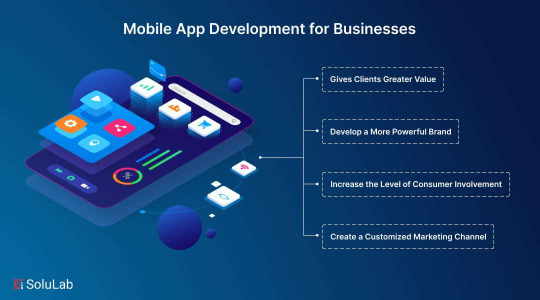
Understanding Customer Retention in Mobile Apps
Customer retention is the ability of a business to keep its users engaged over time. Unlike customer acquisition, which focuses on attracting new users, retention ensures that existing customers continue using the app, making repeat purchases, and engaging with the brand. Studies show that increasing customer retention rates by just 5% can lead to a profit boost of 25% to 95%.
Factors Influencing Customer Retention:
Seamless User Experience (UX) – Users expect smooth navigation and quick response times.
Personalization – Custom recommendations and push notifications improve engagement.
Regular Updates – Fixing bugs and adding new features keeps users interested.
Strong Customer Support – Prompt assistance builds trust and loyalty.
Loyalty Programs & Gamification – Rewarding users enhances retention.
How a Mobile App Development Company Improves Customer Retention
1. Developing a User-Centric App Design
A mobile app development company focuses on crafting intuitive UI/UX designs that ensure seamless navigation and user satisfaction. A clutter-free design with clear call-to-action (CTA) buttons enhances user interaction and minimizes frustration, leading to improved retention rates.
2. Enhancing Performance & Speed
Slow-loading apps frustrate users, leading to high abandonment rates. Professional developers optimize app performance by minimizing loading times, reducing crashes, and ensuring smooth functionality across various devices and operating systems. Implementing lightweight coding, caching strategies, and progressive web app (PWA) technologies enhances speed and responsiveness.
3. Personalization & AI-driven Features
A mobile app development company integrates Artificial Intelligence (AI) and Machine Learning (ML) to analyze user behavior and preferences. AI-driven recommendations, customized push notifications, and in-app messages create a personalized experience that keeps users engaged.
For instance:
E-commerce apps suggest products based on browsing history.
Fitness apps tailor workout routines based on user activity.
Streaming apps recommend content according to user preferences.
4. Seamless Onboarding Experience
A complicated sign-up process can deter users from using the app. Developers streamline the onboarding process with social media logins, interactive tutorials, and guided tours to ensure a smooth user journey from the start.
5. Push Notifications & Engagement Strategies
Timely and relevant push notifications encourage users to revisit the app. However, excessive notifications can be annoying. A mobile app development company strategically implements AI-based notifications that align with user behavior, such as:
Cart reminders for e-commerce apps.
Daily updates for news apps.
Special offers & discounts for retail businesses.
6. Regular Updates & Bug Fixes
Users are quick to abandon apps with glitches or outdated features. A reliable mobile app development company continuously monitors app performance, collects user feedback, and rolls out updates with bug fixes, security patches, and new features to enhance user experience.
7. Integration of Gamification & Loyalty Programs
Gamification elements such as reward points, badges, challenges, and leaderboards keep users motivated. Additionally, integrating loyalty programs with cashback offers, referral bonuses, and exclusive discounts fosters long-term customer relationships.
8. Robust Security & Data Privacy
Data breaches and security threats can damage a brand’s reputation. Mobile app developers implement end-to-end encryption, multi-factor authentication, and GDPR compliance to protect user data. Secure apps build trust, which directly impacts customer retention.
9. Omnichannel Experience & Cross-Platform Compatibility
To retain users, an app must provide a seamless experience across multiple devices, including smartphones, tablets, and desktops. Mobile app development companies use cross-platform frameworks like Flutter and React Native to ensure consistent performance, allowing users to switch devices without losing data or progress.
10. Advanced Analytics & Performance Tracking
Monitoring user behavior and app performance is essential for improving retention. Mobile app developers integrate analytics tools like Google Analytics, Firebase, and Mixpanel to track user engagement, session durations, and drop-off points. This data helps in optimizing the app based on real user insights.
Conclusion
A well-developed mobile app is a powerful tool for customer retention, but its success depends on the expertise of a mobile app development company. By focusing on user-centric design, seamless functionality, personalization, security, and engagement strategies, these companies help businesses maintain a loyal customer base.
If you’re looking to enhance customer retention through a mobile app, partnering with a skilled development team can make all the difference. Invest in a high-quality app today and watch your customer retention rates soar!
0 notes
Text
The Role of Analytics in Mobile App Development Companies
In today's competitive digital landscape, mobile app development companies are constantly looking for ways to improve user experience, increase engagement, and drive revenue.
One of the most effective ways to achieve these goals is through the strategic use of analytics. Analytics provides developers with valuable insights into user behavior, app performance, and market trends, enabling data-driven decision-making. This blog explores the role of analytics in mobile app development and how companies can leverage it to build successful applications.
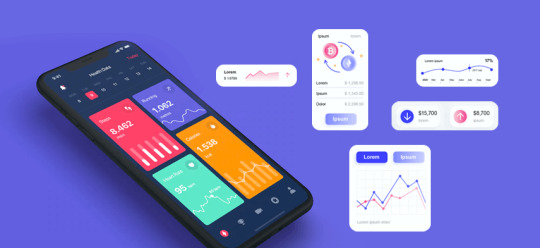
Understanding Mobile App Analytics
Mobile app analytics refers to the process of collecting, measuring, and analyzing data related to mobile applications. These insights help developers understand how users interact with their apps, identify potential issues, and optimize the overall experience.
There are several types of mobile app analytics, including:
User Analytics – Tracks user behavior, preferences, and engagement.
Performance Analytics – Monitors app speed, crashes, and bugs.
Marketing Analytics – Evaluates the effectiveness of advertising campaigns.
Revenue Analytics – Analyzes monetization strategies and revenue generation.
By integrating these analytics, mobile app development companies can make data-driven decisions to enhance their applications.
Benefits of Analytics in Mobile App Development
1. Improved User Experience
Analytics provides insights into user behavior, helping developers identify pain points and optimize app usability. For example, heatmaps can reveal which features users interact with the most, allowing developers to refine the UI/UX for a more seamless experience.
2. Enhanced Performance Monitoring
Performance analytics helps developers track issues such as app crashes, slow load times, and bugs. By analyzing real-time data, companies can quickly resolve technical problems, ensuring smooth app functionality.
3. Data-Driven Marketing Strategies
Mobile app analytics play a crucial role in marketing. Companies can track key performance indicators (KPIs) such as user acquisition, retention rates, and conversion rates. By understanding which marketing channels drive the most traffic, businesses can optimize their advertising strategies for better ROI.
4. Increased User Retention and Engagement
User retention is a major challenge in the app industry. By leveraging analytics, developers can identify drop-off points, understand why users abandon the app, and implement strategies to enhance engagement. Push notifications, personalized recommendations, and gamification are some tactics informed by analytics data.
5. Effective Monetization Strategies
For apps that rely on in-app purchases or ads for revenue, analytics can help optimize monetization efforts. Revenue analytics track which features generate the most income, enabling companies to refine pricing strategies, ad placements, and subscription models.
Key Metrics to Track in Mobile App Analytics
To make informed decisions, mobile app developers should monitor the following key metrics:
Active Users – The number of daily, weekly, and monthly active users.
Retention Rate – The percentage of users who continue using the app over time.
Churn Rate – The percentage of users who stop using the app.
Session Duration – The average time users spend in the app per session.
Conversion Rate – The percentage of users who complete a desired action (e.g., making a purchase, signing up, or upgrading a plan).
Crash Reports – Data on app crashes and technical issues.
Customer Lifetime Value (CLV) – The total revenue a user generates throughout their engagement with the app.
Tools for Mobile App Analytics
Several tools help mobile app development companies collect and analyze data effectively. Some of the most popular analytics tools include:
Google Analytics for Firebase – Tracks user behavior, engagement, and retention.
Flurry Analytics – Provides insights into app usage and user demographics.
Mixpanel – Focuses on user interaction and event tracking.
Appsflyer – Specializes in mobile attribution and marketing analytics.
Kissmetrics – Offers detailed customer journey tracking and segmentation.
By integrating these tools, mobile app companies can gain deeper insights and optimize their applications accordingly.
Future Trends in Mobile App Analytics
As technology evolves, mobile app analytics will continue to play a crucial role in development. Some emerging trends include:
AI and Machine Learning in Analytics – AI-powered analytics tools provide predictive insights, helping developers anticipate user needs and automate decision-making.
Real-Time Analytics – Faster data processing enables companies to make immediate adjustments and enhance app performance.
Privacy-Focused Analytics – With growing concerns over data privacy, developers are adopting privacy-compliant analytics solutions that prioritize user consent and data protection.
Cross-Platform Analytics – As businesses develop apps for multiple platforms (iOS, Android, Web), unified analytics solutions are becoming essential for tracking user behavior across different devices.
Conclusion
Analytics is a game-changer in Mobile App Development Company, providing invaluable insights that drive user engagement, improve performance, and optimize monetization strategies. By leveraging the right analytics tools and metrics, mobile app development companies can create data-driven applications that stand out in the competitive market. As technology advances, staying ahead of analytics trends will be crucial for continued success in the app industry.
By incorporating analytics into every stage of development, companies can ensure that their apps meet user expectations, deliver seamless experiences, and achieve long-term growth.
0 notes
Text
How Mobile App Development Companies Optimize Apps for Speed
In today’s fast-paced digital world, users expect mobile apps to be lightning-fast and responsive.
A slow or laggy app can lead to high bounce rates, negative reviews, and loss of revenue. Mobile app development companies understand the importance of app performance and employ various strategies to optimize apps for speed. In this blog, we will explore the key techniques used by mobile app developers to enhance app speed and improve user experience.
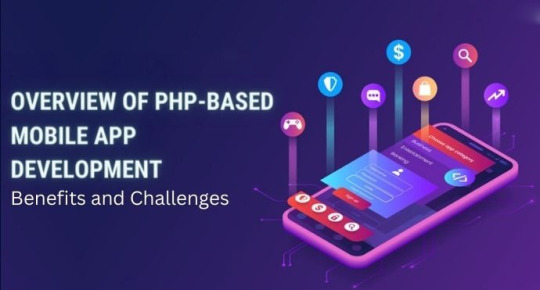
1. Efficient Code Optimization
One of the first steps in improving app speed is optimizing the codebase. Developers write clean, efficient, and minimalistic code to reduce processing time. They avoid unnecessary loops, redundant calculations, and excessive memory allocations. Techniques such as:
Minifying and compressing JavaScript, CSS, and HTML files.
Using efficient algorithms and data structures.
Implementing lazy loading to load only the required content.
2. Reducing App Load Time with Lightweight Resources
Heavy images, videos, and high-resolution graphics can significantly slow down an app. To enhance speed, mobile app development companies:
Use compressed and optimized images in formats like WebP instead of PNG or JPEG.
Implement adaptive streaming for videos to adjust quality based on network conditions.
Utilize vector graphics for UI elements instead of raster images.
3. Caching and Data Optimization
Caching reduces the need to fetch data repeatedly from servers, thereby improving load times. Developers implement:
Local caching: Storing frequently accessed data on the user’s device.
Server-side caching: Using CDNs (Content Delivery Networks) to serve content faster.
Database optimization: Using indexing and query optimization to retrieve data efficiently.
4. Optimizing API Calls
Frequent API calls can slow down an app. Developers enhance performance by:
Batching API requests to reduce the number of server requests.
Using RESTful or GraphQL APIs for faster data retrieval.
Implementing asynchronous operations to prevent the UI from freezing while data loads in the background.
5. Efficient Memory Management
Poor memory management can lead to crashes and sluggish performance. To prevent this, developers:
Avoid memory leaks by properly releasing unused objects.
Optimize background processes to ensure they don’t consume excessive RAM.
Use tools like Android Profiler and Instruments for iOS to monitor memory usage.
6. Minimizing App Size
A bulky app takes longer to load and consumes more storage. Developers reduce app size by:
Removing unnecessary libraries and resources.
Using Android App Bundles or iOS Bitcode for optimized distribution.
Implementing on-demand resource loading to download only essential components initially.
7. Leveraging Multithreading and Parallel Processing
By distributing tasks across multiple threads, developers enhance performance. Techniques include:
Background threading: Running tasks like image processing in the background.
Parallel execution: Splitting large tasks into smaller chunks for simultaneous execution.
8. Network Optimization
Slow network performance can hinder an app’s speed. Developers optimize network interactions by:
Implementing data compression techniques like Gzip.
Using WebSockets instead of traditional HTTP requests for real-time updates.
Prefetching data to reduce waiting times.
9. Continuous Performance Testing
To ensure apps remain optimized, developers perform:
Load testing to simulate heavy traffic and analyze response times.
A/B testing to compare performance across different versions.
Profiling using tools like Firebase Performance Monitoring or Xcode Instruments.
10. Regular Updates and Maintenance
Performance optimization is an ongoing process. Mobile app development companies frequently update apps to:
Fix bugs that slow down performance.
Introduce new optimization techniques.
Adapt to new hardware and software advancements.
Conclusion
Speed optimization is crucial for delivering a seamless Mobile App Development Company experience. By focusing on code efficiency, caching, API optimization, memory management, and network enhancements, mobile app development companies ensure their apps run swiftly and smoothly. Whether you’re a business owner or a developer, prioritizing app performance will lead to better user retention, engagement, and overall success.
Looking to optimize your app for speed? Partner with a professional mobile app development company today and provide your users with a fast, seamless experience!
0 notes
Text
Top Features Offered by a Mobile App Development Company
In today's rapidly evolving digital world, mobile apps have become integral to businesses and consumers alike.
From enhancing user experience to boosting brand visibility, mobile applications are at the heart of digital transformation. This has led to the growing demand for professional mobile app development companies that can deliver innovative and high-performing applications. But what features should businesses look for when partnering with a mobile app development company? In this blog, we will explore the top features and services offered by a mobile app development company to help businesses make an informed decision.
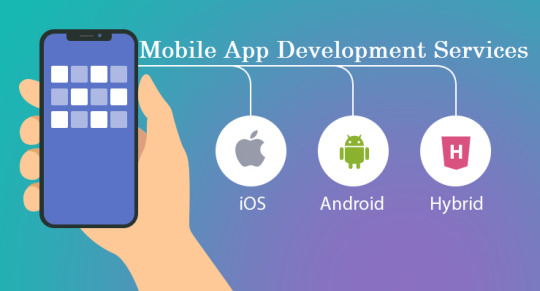
1. Custom Mobile App Development
Every business has unique requirements and goals, which means a one-size-fits-all approach to mobile app development simply won't work. A top-tier mobile app development company specializes in custom mobile app development, providing tailored solutions that align with your specific needs. Whether you need an iOS app, Android app, or cross-platform app, developers use the latest technologies to craft solutions that match your brand and business objectives.
With custom app development, you get a unique product that is designed specifically for your target audience, ensuring better engagement and user experience.
2. Cross-Platform App Development
One of the major challenges businesses face is reaching a wide audience across different devices and platforms. Cross-platform mobile app development solves this problem by enabling companies to create a single app that works seamlessly on both iOS and Android devices. This not only reduces development costs but also ensures consistency across platforms, providing users with a unified experience.
A skilled mobile app development company uses frameworks like React Native, Flutter, and Xamarin to build apps that perform well across various platforms without compromising on quality or user experience.
3. User-Centric Design
A well-designed app is more than just aesthetically pleasing; it needs to provide an intuitive and seamless experience. The user interface (UI) and user experience (UX) design are critical components of a mobile app that contribute to its success. A mobile app development company with a focus on user-centric design ensures that your app is easy to navigate, visually appealing, and functional.
Top app developers use techniques like wireframing, prototyping, and UI/UX testing to make sure the final product meets the highest standards. By focusing on user experience, they enhance customer satisfaction, which leads to higher retention and engagement.
4. App Testing and Quality Assurance
A mobile app's success depends heavily on its performance and functionality. Bugs, glitches, or crashes can quickly lead to negative reviews, impacting the app's reputation. To prevent such issues, a professional mobile app development company ensures rigorous app testing and quality assurance throughout the development process.
Testing includes various methods such as functional testing, usability testing, performance testing, and security testing to ensure the app is bug-free, runs smoothly, and meets the highest quality standards. By conducting comprehensive testing, developers can identify and address potential issues before the app reaches the market.
5. App Maintenance and Support
The launch of an app is just the beginning. To ensure it continues to function properly and stays up-to-date with the latest technologies, app maintenance and support are essential. A mobile app development company provides ongoing support to troubleshoot any issues, implement updates, and add new features as needed.
Whether it's fixing bugs, improving security, or optimizing the app for newer devices and OS versions, reliable maintenance and support are crucial for the longevity of your mobile app. A dedicated support team helps you keep your app running smoothly post-launch, ensuring your customers always have a great experience.
6. Mobile App Security
With the increasing reliance on mobile apps for both personal and business transactions, security has become a top priority. A reputable mobile app development company prioritizes mobile app security, implementing robust security measures to protect user data and prevent cyber threats.
This includes encryption, two-factor authentication, secure API integrations, and secure cloud storage. By using industry-standard security protocols, app developers ensure that both user and business data is safe from breaches, fostering trust and confidence in your app.
7. App Analytics and Reporting
In order to make data-driven decisions and improve the app's performance, app analytics and reporting features are indispensable. A mobile app development company provides detailed analytics to track user behavior, app performance, and key metrics such as retention rates, downloads, and in-app purchases.
With this valuable data, businesses can gain insights into how users interact with the app, identify areas for improvement, and make informed decisions to enhance user experience, engagement, and profitability.
8. Integration with Third-Party Services
Many businesses require their apps to integrate with third-party services or software to offer additional features, such as payment gateways, social media sharing, or customer relationship management (CRM) tools. A professional mobile app development company has experience in third-party integrations, allowing them to seamlessly connect your app with external services and platforms.
By integrating third-party APIs, your app can access powerful features, improving functionality and creating a more connected and cohesive user experience.
9. App Marketing and Launch Support
Once your app is developed, you’ll need a strategy to launch and promote it. A mobile app development company that offers app marketing and launch support can help you generate buzz and ensure a successful launch. From optimizing app store listings to running targeted marketing campaigns, they ensure that your app reaches a wide audience and attracts the right users.
App marketing strategies include app store optimization (ASO), social media marketing, influencer collaborations, and paid advertising to ensure that your app gets the attention it deserves.
10. Cost-Effective Solutions
While developing a high-quality mobile app requires investment, a leading mobile app development company offers cost-effective solutions without compromising on quality. They work with businesses to create a clear roadmap and budget for the project, optimizing resources and time to deliver the app within the set timeline and budget.
Through streamlined processes and efficient development practices, a mobile app development company ensures that you get the most value for your investment.
Conclusion
Choosing the right mobile app development company is crucial to ensuring that your app is a success. Whether you need custom development, cross-platform solutions, or ongoing support, these key features are essential for a seamless app development experience. By partnering with a reputable company that offers comprehensive services, businesses can create apps that not only meet their objectives but also provide a great user experience, increase customer satisfaction, and drive growth.
0 notes
Text
The Evolution of Mobile App Development Companies Over the Years
Mobile app development has undergone tremendous changes since the advent of smartphones, and mobile app development companies have had to adapt to these changes to stay competitive.
From basic mobile apps to the complex, AI-powered applications we use today, the journey of mobile app development is a fascinating one. This article explores how mobile app development companies have evolved over the years, highlighting key trends, technological advancements, and the shifting demands of users.

The Early Days: Simple and Static Apps
In the early 2000s, the mobile app development industry was still in its infancy. The first significant shift came with the launch of the iPhone in 2007, which revolutionized the mobile phone market. However, even then, mobile apps were simple and static, offering basic functionalities such as calculators, calendars, and simple games. These apps were often built for specific platforms, and developers had to create separate versions for iOS, Android, or other systems, resulting in increased costs and complexity.
During this period, mobile app development companies were focused on creating apps with limited features, often focusing more on design and user experience (UX) than on complex functionality. The use of development tools was also relatively limited, with developers working with basic SDKs (Software Development Kits) provided by mobile operating systems like iOS and Android.
The Rise of App Stores and the Explosion of App Development
The release of Apple's App Store in 2008 and the subsequent launch of the Android Market (now Google Play) a year later were game-changers in the mobile app development landscape. These platforms allowed developers to distribute their apps to a global audience, opening up new opportunities for businesses and entrepreneurs. The app store ecosystem shifted the focus from just building apps to also marketing and monetizing them effectively.
Mobile app development companies quickly realized the potential for rapid growth, and app development became a lucrative business. As the app store ecosystems matured, companies began to focus on creating more sophisticated, feature-rich applications. The development of native apps became more widespread, and developers had to start learning platform-specific languages like Swift (for iOS) and Kotlin (for Android).
As apps became more complex, so did the tools available to developers. The introduction of cross-platform frameworks like Xamarin and React Native allowed companies to write code once and deploy it across multiple platforms. This not only reduced development time but also made app development more cost-effective.
The Mobile-First Era: Responsive Design and User-Centric Apps
By the early 2010s, mobile apps had become an integral part of our daily lives. Businesses of all sizes started to recognize the need for mobile-first strategies, designing their websites and applications with mobile users in mind. This shift in focus influenced the way mobile apps were developed and optimized for different devices, screen sizes, and resolutions.
User-centric design became a core focus for mobile app development companies during this period. Apps needed to be responsive, intuitive, and easy to navigate. The rise of social media and the explosion of mobile gaming also fueled the growth of app development companies, as apps began to offer more interactive and immersive experiences.
The introduction of mobile payment systems, location-based services, and push notifications changed the way businesses interacted with their customers. These features became essential for apps in industries like e-commerce, healthcare, and entertainment. App developers began integrating advanced technologies such as geolocation services, real-time data syncing, and in-app purchases, paving the way for more sophisticated apps that could cater to specific business needs.
The Impact of Artificial Intelligence and Machine Learning
As we moved into the late 2010s and early 2020s, artificial intelligence (AI) and machine learning (ML) began to play a crucial role in the evolution of mobile app development. With the ability to analyze large datasets and deliver personalized experiences, AI and ML opened up new possibilities for mobile apps.
Mobile app development companies started integrating AI and ML algorithms into their apps to improve user experiences. From personalized recommendations in e-commerce apps to voice assistants like Siri and Google Assistant, AI-powered apps began to dominate the market. These technologies also enabled the development of smart apps that could learn from user behavior and adapt accordingly.
Moreover, advancements in natural language processing (NLP) and computer vision allowed mobile app developers to create more sophisticated apps. For example, facial recognition features in security apps and virtual try-on experiences in retail apps became commonplace. The inclusion of AI and ML enabled apps to become smarter, more intuitive, and more efficient.
Cloud-Based Solutions and the Role of Big Data
Cloud technology has played a significant role in the evolution of mobile app development. As businesses sought ways to handle large amounts of data and improve scalability, mobile app development companies turned to cloud-based solutions. Cloud computing enabled apps to store data securely, offer real-time updates, and provide seamless syncing across multiple devices.
Big data also played a role in shaping mobile app development. With the ability to process massive amounts of data quickly, mobile apps could provide deeper insights into user behavior, preferences, and interactions. This data-driven approach allowed developers to create more personalized and targeted apps that met the specific needs of users.
The Future of Mobile App Development
Looking ahead, mobile app development will continue to evolve, driven by advancements in technology and changing user expectations. The integration of emerging technologies such as augmented reality (AR), virtual reality (VR), and the Internet of Things (IoT) is expected to reshape the mobile app landscape. Additionally, with the increasing demand for app security and privacy, mobile app development companies will focus on creating secure and compliant apps that protect user data.
Another trend that is expected to grow is the use of low-code and no-code development platforms. These platforms enable non-technical users to create apps without the need for extensive coding knowledge, democratizing the app development process.
Conclusion
The evolution of mobile app development companies reflects the broader changes in technology, user needs, and business goals. From simple apps to AI-powered, cloud-based solutions, mobile app development has come a long way in a relatively short period. As new technologies emerge and user expectations continue to rise, mobile app development companies will need to adapt and innovate to stay ahead of the curve. The future of mobile app development looks incredibly promising, with endless possibilities for businesses and developers alike.
0 notes
Text
How Flutter Software Development Is Changing the Cross-Platform App Landscape
In the ever-evolving world of mobile application development, the demand for cross-platform frameworks has skyrocketed.
Developers and businesses alike seek solutions that save time, reduce costs, and deliver exceptional user experiences. Among the various frameworks available, Flutter has emerged as a revolutionary force, reshaping the cross-platform app development landscape. Created by Google, Flutter has garnered widespread attention and adoption for its unique approach to building mobile, web, and desktop applications from a single codebase.

The Rise of Cross-Platform Development
Traditionally, developers needed to build separate applications for each platform, such as Android and iOS. This process was time-consuming, resource-intensive, and prone to inconsistencies. Cross-platform development frameworks sought to address these challenges by allowing developers to write code once and deploy it across multiple platforms. While early solutions like PhoneGap and Xamarin paved the way, they often fell short in delivering native-like performance and user experiences.
Enter Flutter: a framework that not only simplifies cross-platform development but also sets new standards for performance, aesthetics, and developer productivity.
What Makes Flutter Stand Out?
1. Single Codebase for Multiple Platforms
Flutter enables developers to write a single codebase that can be deployed on Android, iOS, web, and even desktop platforms. This drastically reduces development time and costs, making it an ideal choice for startups and enterprises alike.
2. Rich and Customizable UI
Flutter’s hallmark feature is its ability to create visually stunning and highly customizable user interfaces. It uses a rendering engine called Skia, which allows developers to build pixel-perfect UIs that look and feel native on any platform. With a vast library of pre-designed widgets and the ability to create custom components, Flutter provides unparalleled flexibility in UI design.
3. Hot Reload for Rapid Development
One of Flutter’s most beloved features is its hot reload functionality. This allows developers to see changes in real time without restarting the application. Hot reload significantly speeds up the development process, enabling faster iterations and quicker debugging.
4. Native-Like Performance
Unlike some cross-platform frameworks that rely on web views or bridge technologies, Flutter compiles directly to native ARM code. This ensures smooth performance and eliminates the lag often associated with hybrid apps. The result is an app experience that rivals native development in terms of speed and responsiveness.
5. Vibrant Ecosystem and Community
Flutter boasts a growing ecosystem of plugins and packages that extend its functionality. From integrating with APIs to adding advanced features like machine learning and augmented reality, the Flutter community continuously contributes to its evolution. Additionally, Google’s active support ensures regular updates and improvements.
How Flutter Is Redefining Cross-Platform Development
1. Cost-Effective Solutions for Businesses
Flutter’s single codebase approach significantly reduces development and maintenance costs. Businesses no longer need to hire separate teams for Android and iOS development, making it an attractive option for startups with limited budgets.
2. Enhanced User Experiences
With its robust set of widgets and high-performance rendering engine, Flutter delivers user interfaces that are both visually appealing and functional. This level of customization allows businesses to create unique brand experiences that stand out in a crowded app market.
3. Accelerated Time-to-Market
Flutter’s rapid development capabilities, combined with its hot reload feature, enable faster prototyping and deployment. This is particularly advantageous in today’s fast-paced digital environment, where being first to market can be a critical success factor.
4. Support for Emerging Technologies
Flutter is well-equipped to handle emerging technologies like IoT, AI, and AR/VR. Its compatibility with various APIs and libraries makes it a future-proof choice for businesses looking to innovate and stay ahead of the curve.
5. Consistency Across Platforms
One of the biggest challenges in cross-platform development is ensuring consistency across devices. Flutter’s rendering engine ensures that apps look and behave identically on different platforms, providing a seamless user experience.
Real-World Success Stories
Several high-profile companies have adopted Flutter to power their applications. For example:
Google Ads: The Google Ads app, used by marketers worldwide, is built with Flutter, showcasing its scalability and reliability.
Alibaba: The global e-commerce giant uses Flutter to deliver a seamless shopping experience to millions of users.
BMW: The luxury car manufacturer leverages Flutter to build apps that enhance the driving experience.
These success stories demonstrate Flutter’s ability to meet the demands of diverse industries and use cases.
Challenges and Considerations
While Flutter offers numerous advantages, it’s important to consider potential challenges. For instance, the framework’s large app size and limited support for certain platform-specific features may require additional effort to address. However, ongoing updates and a growing community are steadily mitigating these concerns.
The Future of Flutter
As Flutter continues to evolve, its impact on the cross-platform development landscape will only grow stronger. With the introduction of Flutter 3, which extends support to web and desktop platforms, the framework is poised to become the go-to solution for multi-platform development.
Additionally, Flutter’s integration with Google’s other technologies, such as Firebase, ensures seamless backend support, making it a comprehensive solution for modern app development.
Conclusion
Flutter App Development Company is more than just a framework; it’s a game-changer in the world of cross-platform app development. By offering a single codebase, native-like performance, and unmatched UI capabilities, it empowers developers and businesses to create exceptional applications with greater efficiency. As the demand for versatile, high-quality apps continues to rise, Flutter’s role in shaping the future of software development cannot be overstated. For businesses and developers looking to stay ahead in the digital age, Flutter is undoubtedly a framework worth exploring.
0 notes
Text
The Role of Blockchain in Mobile App Development Companies
Blockchain technology, often associated with cryptocurrencies like Bitcoin, is making waves in numerous industries. One area experiencing significant transformation is mobile app development. Mobile app development companies are leveraging blockchain to enhance security, transparency, and efficiency, ushering in a new era of innovation.

Understanding Blockchain in Mobile App Development
Blockchain is a decentralized digital ledger that records transactions across a network of computers. Its key characteristics include immutability, transparency, and security, making it a powerful tool for addressing challenges in mobile app development.
For mobile app development companies, blockchain provides opportunities to innovate and create applications with robust features that cater to modern user demands, such as heightened security and decentralized data management.
Key Benefits of Blockchain in Mobile App Development
1. Enhanced Security
Security is a top concern for mobile apps, especially those handling sensitive data like financial transactions or personal information. Blockchain technology ensures that data is encrypted and stored across a decentralized network, making it highly resistant to hacking and unauthorized access.
2. Transparency and Trust
Blockchain's transparent nature enables mobile apps to gain users' trust. Every transaction or change is recorded on the blockchain, creating an unalterable audit trail. This is particularly beneficial for apps in industries like healthcare, finance, and e-commerce, where accountability is crucial.
3. Improved Payment Systems
Mobile apps increasingly rely on seamless payment solutions. Blockchain facilitates secure, fast, and low-cost peer-to-peer transactions without intermediaries. Apps integrating blockchain-based payment systems can provide a global, borderless payment experience.
4. Decentralized Applications (DApps)
Blockchain enables the creation of decentralized applications, or DApps, which operate on peer-to-peer networks rather than centralized servers. DApps offer greater resilience, better privacy, and reduced downtime, making them attractive for various use cases, including gaming, social media, and supply chain management.
5. Ownership and Identity Management
Blockchain technology ensures data ownership remains with the user. Apps leveraging blockchain can implement secure identity verification systems that protect users' personal information from breaches while ensuring compliance with data privacy regulations.
6. Streamlined Supply Chain Management
Blockchain's traceability features are transforming mobile apps in supply chain management. Apps can provide real-time tracking, fraud prevention, and verification of goods' authenticity, enhancing the user experience and operational efficiency.
Use Cases of Blockchain in Mobile Apps
Finance Apps: Blockchain secures transactions and provides faster, cost-effective solutions for peer-to-peer transfers and international payments.
Healthcare Apps: Patients can securely share medical records with authorized parties, ensuring privacy and data integrity.
Gaming Apps: Blockchain introduces tokenization for in-game assets, ensuring players have true ownership of digital assets.
Social Media Apps: Blockchain prevents data breaches and ensures user-generated content cannot be manipulated or deleted without consent.
Challenges of Implementing Blockchain in Mobile Apps
Despite its potential, blockchain integration in mobile app development comes with challenges:
Complexity: Developing blockchain-based apps requires specialized skills and understanding of cryptographic algorithms.
Scalability: Blockchain networks may face performance issues when handling large volumes of transactions.
Cost: Initial development costs can be higher compared to traditional mobile app development due to the complexity and resources required.
Future of Blockchain in Mobile App Development
As blockchain technology matures, its adoption in mobile app development is set to rise. Innovations like Layer 2 solutions, which enhance blockchain scalability, and the integration of AI with blockchain will further expand its applications.
Mobile App Development Company must embrace blockchain to stay competitive and meet evolving user demands. By addressing challenges and capitalizing on blockchain's benefits, these companies can create groundbreaking apps that redefine user experiences.
Conclusion
Blockchain is more than just a buzzword; it's a transformative technology reshaping mobile app development. From enhancing security and transparency to enabling innovative applications, blockchain offers immense potential for mobile app development companies. By leveraging blockchain, these companies can build trust, improve user experiences, and drive technological advancements, ensuring a robust and sustainable future in the digital era.
0 notes
Text
How to Protect Your Mobile App from Cyber Threats?
In today’s hyper-connected world, mobile applications are an essential part of our daily lives. From banking to entertainment, shopping to fitness, these apps handle sensitive data and serve millions of users globally.
However, their widespread use also makes them prime targets for cyber threats. Protecting your mobile app from malicious actors is not only a legal and ethical responsibility but also crucial for maintaining user trust and brand reputation.
Here’s how you can safeguard your app from cyber threats.

1. Incorporate Secure Coding Practices
The foundation of a secure mobile app lies in its code. Use secure coding practices to minimize vulnerabilities. Adopt techniques like input validation, parameterized queries, and encryption to protect against SQL injections and cross-site scripting (XSS).
Regularly scan your code for vulnerabilities using automated tools and conduct code reviews to identify potential weaknesses before deployment.
2. Encrypt Data End-to-End
Data encryption is one of the most effective ways to protect sensitive information. Whether it’s stored data or in-transit data, encryption ensures that even if cybercriminals intercept the data, they cannot read or manipulate it without the decryption key. Use strong encryption protocols such as AES-256 for data storage and TLS for secure communications.
3. Implement Strong Authentication
Weak authentication mechanisms are a common entry point for attackers. Use robust authentication methods like multi-factor authentication (MFA) to enhance security.
MFA combines something the user knows (password), something they have (security token), and something they are (biometrics), making it significantly harder for attackers to gain unauthorized access.
4. Secure APIs
APIs are the backbone of mobile apps, enabling communication between different systems. However, insecure APIs can expose your app to threats like data breaches and unauthorized access. Secure your APIs by using authentication tokens, implementing API gateways, and setting strict access controls. Regularly test your APIs for vulnerabilities and ensure they adhere to industry security standards.
5. Regular Security Testing
Regular security testing helps identify and fix vulnerabilities before attackers exploit them. Conduct penetration testing, vulnerability assessments, and static and dynamic analysis of your app. Integrate security testing into your development lifecycle (DevSecOps) to ensure continuous monitoring and improvement of your app’s security.
6. Protect Against Reverse Engineering
Attackers often attempt to reverse-engineer mobile apps to uncover vulnerabilities or steal intellectual property. Use obfuscation techniques to make your app’s code harder to understand and analyze. Additionally, integrate anti-debugging and anti-tampering measures to further complicate reverse engineering attempts.
7. Ensure Secure Data Storage
Improperly secured data storage can expose sensitive user information. Avoid storing sensitive data directly on the device whenever possible.
If storage is necessary, use secure containers or the operating system’s secure storage options. Always encrypt stored data and never hard-code sensitive information, such as API keys or passwords, into your app.
8. Monitor and Respond to Threats
Continuous monitoring of your app and its environment is critical for detecting and responding to cyber threats in real-time. Use tools like intrusion detection systems (IDS), application performance monitoring (APM), and logging mechanisms to monitor activity and detect anomalies. Establish a robust incident response plan to handle security breaches effectively.
9. Stay Updated on Security Trends
Cyber threats evolve constantly, making it vital to stay informed about the latest security trends, threats, and best practices. Regularly update your app to patch known vulnerabilities and leverage threat intelligence services to stay ahead of potential attackers.
10. Educate Your Users
End users can often be the weakest link in the security chain. Educate your users on best practices for using your app securely.
Encourage them to use strong passwords, avoid public Wi-Fi for sensitive transactions, and keep their app updated. Provide clear guidance on recognizing phishing attempts and reporting suspicious activities.
11. Comply with Industry Standards
Adhering to industry standards and regulations helps ensure your app meets the necessary security requirements. Standards such as OWASP Mobile Security Guidelines, GDPR, or PCI DSS for financial apps provide a framework for implementing comprehensive security measures. Regular audits can help verify compliance and identify areas for improvement.
12. Leverage App Security Solutions
Invest in mobile app security tools and solutions to enhance protection. Mobile app shields, runtime application self-protection (RASP), and mobile threat defense (MTD) tools can provide additional layers of security by detecting and preventing attacks in real-time.
Conclusion
Protecting your Flutter App Development Company from cyber threats is an ongoing process that requires a proactive and multi-layered approach.
By integrating secure coding practices, encrypting data, implementing strong authentication, and staying vigilant through regular testing and monitoring, you can build a robust defense against evolving cyber threats.
Security is not just a feature—it’s a necessity. Prioritizing it ensures user trust, regulatory compliance, and the longevity of your app in an increasingly digital world.
0 notes
Text
The Impact of Cloud Computing on Mobile App Development Companies
The rapid advancements in technology have dramatically transformed the landscape of mobile app development. One of the most significant game-changers in recent years is cloud computing.
This innovative technology has revolutionized the way mobile app development companies operate, enabling them to create more robust, scalable, and efficient applications.
Let’s explore how cloud computing has impacted mobile app development companies and reshaped the industry.

1. Enhanced Scalability and Flexibility
Cloud computing offers unparalleled scalability and flexibility, which are crucial for mobile app development. Companies can scale their infrastructure up or down based on the app’s demand without investing in physical hardware.
For instance, during peak usage periods, apps can leverage cloud resources to ensure seamless performance. This scalability not only improves user experience but also helps companies manage costs effectively.
Moreover, cloud-based platforms allow developers to work from anywhere, enabling seamless collaboration across geographies. This flexibility has been particularly beneficial in an era where remote work is becoming the norm. Teams can access project files, share updates, and manage tasks in real-time, enhancing productivity and efficiency.
2. Cost Efficiency
Developing and maintaining traditional on-premises infrastructure can be expensive. It requires significant investment in hardware, software, and ongoing maintenance.
Cloud computing eliminates these costs by offering a pay-as-you-go model, where companies only pay for the resources they use. This cost-efficiency is especially advantageous for startups and small-scale mobile app development companies with limited budgets.
Additionally, cloud service providers often include advanced security features, regular updates, and technical support as part of their services, reducing the need for dedicated IT teams. This allows developers to focus on creating innovative apps rather than managing backend infrastructure.
3. Faster Development Cycles
Cloud computing has significantly shortened the app development lifecycle. With cloud-based tools and platforms, developers can build, test, and deploy applications much faster.
For example, Platform-as-a-Service (PaaS) offerings provide pre-configured environments that eliminate the need to set up servers or configure software manually.
Continuous Integration and Continuous Deployment (CI/CD) pipelines hosted on the cloud enable developers to automate testing and deployment processes.
This not only speeds up development but also ensures that apps are delivered with minimal bugs and errors. The faster time-to-market gives companies a competitive edge in the dynamic mobile app market.
4. Enhanced Collaboration and Productivity
Collaboration is a critical aspect of mobile app development, especially when teams are distributed across different locations.
Cloud computing facilitates real-time collaboration through tools like shared workspaces, version control systems, and integrated communication platforms.
Developers, designers, and project managers can work together seamlessly, reducing delays and improving overall productivity.
Moreover, cloud-based Integrated Development Environments (IDEs) allow multiple team members to code, debug, and review applications simultaneously. This fosters innovation and ensures that the final product meets high-quality standards.
5. Improved Security
Data security is a top concern for mobile app development companies, particularly with the increasing prevalence of cyber threats.
Cloud computing providers invest heavily in advanced security measures, including encryption, firewalls, and intrusion detection systems. They also offer compliance with industry standards such as GDPR, HIPAA, and ISO, ensuring that apps meet regulatory requirements.
For app developers, this means reduced risk of data breaches and greater confidence in the security of their applications. Additionally, cloud-based backup and disaster recovery solutions ensure that critical data is protected and can be restored quickly in case of any disruptions.
6. Support for Innovation
Cloud computing provides a fertile ground for innovation in mobile app development. With access to cutting-edge technologies like Artificial Intelligence (AI), Machine Learning (ML), and the Internet of Things (IoT) through cloud platforms, developers can create more sophisticated and intelligent applications.
For instance, AI-powered chatbots, real-time analytics, and personalized recommendations are now becoming standard features in mobile apps.
Furthermore, cloud computing enables the integration of multiple APIs and third-party services, expanding the functionality of mobile applications. This allows developers to focus on delivering unique and engaging user experiences rather than reinventing the wheel.
7. Global Reach and Performance Optimization
Mobile apps often cater to a global audience, and ensuring optimal performance across different regions can be challenging.
Cloud computing addresses this issue through Content Delivery Networks (CDNs) that distribute app resources across multiple data centers worldwide. This minimizes latency and ensures a consistent user experience regardless of the user’s location.
Additionally, cloud platforms provide advanced monitoring and analytics tools to track app performance in real-time. Developers can identify bottlenecks, optimize resource usage, and implement fixes promptly, ensuring that the app runs smoothly at all times.
8. Simplified Maintenance and Updates
Cloud computing simplifies the maintenance and updating process for mobile apps. Developers can push updates directly to the cloud, ensuring that users always have access to the latest version of the app without needing to download it manually.
This is particularly useful for apps that require frequent updates or have large user bases.
Moreover, cloud-based analytics tools provide insights into user behavior and app performance, enabling developers to make data-driven decisions. This helps in refining the app’s features and functionality over time, leading to better user satisfaction and retention.
Conclusion
The impact of cloud computing on Mobile App Development Company cannot be overstated. From enhancing scalability and reducing costs to fostering innovation and improving collaboration, cloud technology has transformed the way apps are developed, deployed, and maintained.
As the mobile app market continues to grow, companies that embrace cloud computing will be better positioned to meet user demands, stay competitive, and drive innovation in the digital age.
In a world where efficiency, speed, and adaptability are paramount, cloud computing has proven to be an indispensable tool for mobile app development companies. Its influence will only continue to expand, shaping the future of app development and empowering companies to deliver exceptional experiences to their users.
0 notes